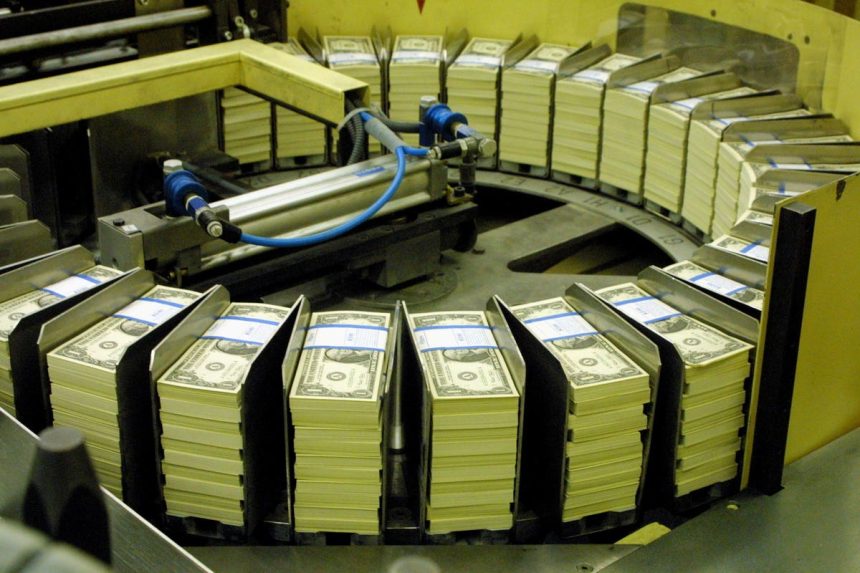Rate hikes by the U.S. Federal Reserve have contributed to bank failures and softening home prices, now they are increasingly impacting the federal budget as interest payments balloon.
Rising Government Debt
The Fed has raised short-term rates, which now stand at over 5%, compared to almost zero for several years. Rising interest rates are hitting the government’s budget too.
U.S. government debt currently stands at over $32 trillion. The amount of debt itself has increased rapidly in recent decades, in part, due to elevated spending during the 2008 financial crisis and 2020 pandemic. In 2000, government debt was under $10 trillion. That’s less than a third of current levels. Another way to benchmark government debt is to compare it to the size of the economy, or Gross Domestic Product (GDP). Government debt stood at 124% of GDP at of 2022. In 2000 that number was 56%. U.S. debt-to-GDP is currently among the highest in the world when compared to other countries, at similar levels to Portugal and Singapore, though Japan has a much higher level of debt compared to economic activity today.
Increasing Interest Cost
However, the burden of large debt is softened when interests rates are very low as has generally been the case in the U.S. since the financial crisis. The Fed has held short-term rates close to zero for most of that time, except for a period of rising rates between 2016 and the start of the pandemic in 2020, and of course now, with of rate hikes starting in 2022 with another hike anticipated from the Fed this month.
Of course, the government borrows over a range of debt maturities, and so longer-term borrowings didn’t see interest costs fall too close to zero, but even so, interest on newly issued 10-year government debt was often below 2% in recent years, compared to almost 4% today. So the interest cost for just about all government debt is increasing. Over time, the cost of government debt will increasingly converge with the current higher rate environment, assuming rates remain around current levels.
The Cost Of Servicing The Debt
For the first quarter of 2023, the cost of servicing the national debt came in at just under a trillion dollars. That’s a record. Still, it’s before the impact of the Fed’s more recent rate hikes and includes a lot of benefit from fixed-cost government debt at previously issued at low rates, so the cost is expected to rise further.
As interest costs rise, the cost of servicing the debt is starting to compete with some of the larger functions of the U.S. government. Interest payments already costs about the same in 2023 so far as spending on veteran’s services; employment and training and transportation combined.
However, assuming debt service costs continue to increase, as seems likely if rates remain at or above current levels, then servicing the national debt will start to compete with some of the five largest categories of government spending including the defense budget and health.
Financial Risks
This trend raises potential risks for the U.S. economy. Of course, the U.S. has a strong financial reputation and benefits from the broad usage of the U.S. dollar globally. However, the U.S. now has among the largest debt to GDP ratios in the world, and being in that group can increase economic risks.
This trend also creates pressure on the government budget, as politicians debate spending priorities, interest on the national debt is increasing and taking a greater share of government spending, making spending trade-offs potentially more challenging.
Read the full article here


